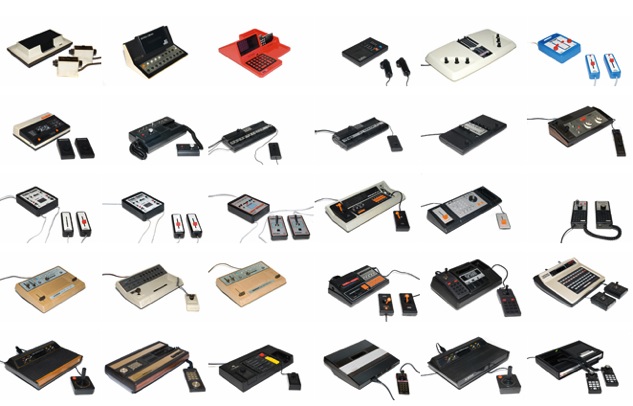1 day

Jesse Emspak
One of the recurring challenges for the military is to send a message without anyone else listening in. Communicating via a laser could be the solution.
The Air Force Research Lab at Wright-Patterson Air Force Base in Ohio is working with Fayetteville, Ark.-based Space Photonics to develop an infrared laser system called free space optical communications. The technology is virtually hack-proof and is able to transmit much more information than other wireless signals.
Its security comes from the nature of the beam, which is so narrow that people cannot eavesdrop on it unless they?re directly in its path. This is a marked contrast to radio waves, which produce "lobes" near the point of transmission that make it possible for a hacker to listen in.
Top 5 Scariest Bioweapons: Photos
If a person does manage to get into the direct path of the laser beam transmission and then tries to "tap" it, the beam gets interrupted. This immediately alerts the sender that another person may be on the line and trying to listen in. The sender would also likely spot if another party were trying to intercept the beam and retransmit since laser systems work as "line of sight" devices.
"It's inherently secure," said Terry Tidwell, chief engineer at Space Photonics, which recently signed a deal to commercialize its technology and sell it to the Department of Defense.
Along with its security, laser communications also pack a lot of information into that narrow beam. Whereas Wi-Fi signals carry megabits every second, an infrared laser beam can carry thousands of times as much data.?
WATCH VIDEO: Therapeutic War Games Helps Iraq Vets
Several companies besides Space Photonics are building laser communications for the military. Among them is ITT Exelis, which got a $7 million contract to finish developing a ship-to-shore system for the Navy, said Gary Tarantino, director of advanced systems and innovation for the company. "We're trying to lock in the design," he said. "to optimize the automation and the corrections for atmospheric interference." By the end of next year, he said, there should be systems in place. It should have a range of about 12 miles, if one station is elevated.
Although air-based laser communications were first proposed in the 1970s, using them was expensive. Fiber optic cable, which started to come into wide use at about the same time, was a cheaper option and had a much longer range. Fiber optics can be as long as the cable, but air-based laser beams have a limit ? typically a few miles, though that can be extended to up to 120 miles if transmitted between aircraft at high altitude.
The costs began to come down with the development of cheaper, semiconductor lasers. At the same time, the proliferation of electronic devices, including smartphones, laptops and tablets, drove the need for more data capacity. What?s more laying down fiber optic cables isn't practical for the battlefield. Stationary, small-scale systems were set up in Afghanistan in the mid-2000s at Bagram Air Base. In the civilian market a number of companies built them to give more capacity to cellphone towers, in order to carry more data to the fiber network.
On the battlefield, laying down fiber optic cables isn't practical. But just like civilians, the military found itself needing to transmit lots of data, so it gave the technology another look. Stationary, small-scale systems were set up at Bagram Air Base in Afghanistan in the mid-2000s.
10 Trickiest Spy Gadgets Ever: Photos
With all the advantages lasers offer, there were also still problems. One is aiming the beam. Early systems used big receivers, or had the beam disperse so that it was several feet wide at the receiving end. Now a combination of adapting the receiver's optics and gimbals are used, in various configurations.
Space Photonics, for example, alters the orientation of the lenses so that the incoming beam always hits the receiver, allowing the gimbals to turn it to do the "coarse" alignment and the optic to do the rest. Exelis' method relies more on the gimbals. AOptix, which demonstrated a system for the Air Force back in 2010, uses adaptive optics, a method adopted from telescopes, to ensure the beam transmits and receives clearly.
While the 1.5 micron wavelength can transmit reasonably well, even through moist air, dense fog will reduce the range of the signal. AOptix combines their system with radio frequency transmitters as a backup.
No technology is perfect, though, and it looks as though optical communications will keep growing, as tracking systems and signal processing gets better. "You have a generation of technologies that are maturing," said Tarantino.?
--Discovery Channel
Source: http://www.nbcnews.com/technology/futureoftech/military-looks-lasers-hack-proof-radio-1C6669314
2012 nfl draft order mohamed sanu chris polk chicago bulls st louis blues rueben randle mike trout

 The Keywords for Video Game Studies graduate interest group?s (GIG) second event of the Autumn Quarter is on Thursday, November 8, 1:30-3:30 PM, in Communication 202. ?This is our second public reading group/workshop of the year and will focus on the gaming term ?History.?
The Keywords for Video Game Studies graduate interest group?s (GIG) second event of the Autumn Quarter is on Thursday, November 8, 1:30-3:30 PM, in Communication 202. ?This is our second public reading group/workshop of the year and will focus on the gaming term ?History.?